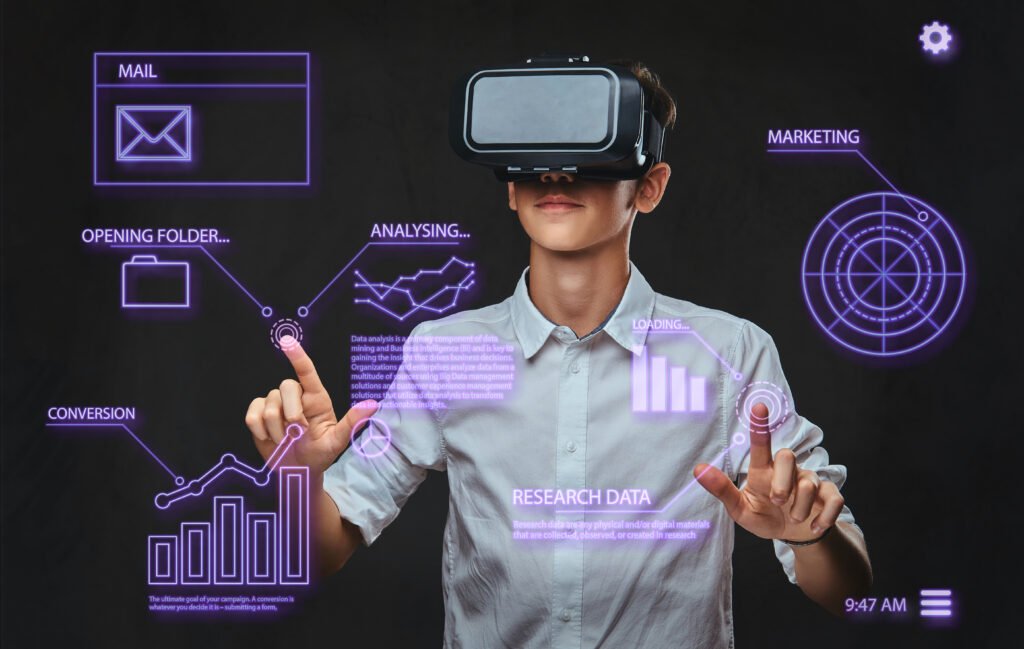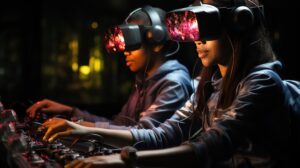Introduction to AI-powered virtual influencers
In recent years, a new phenomenon has taken the world of social media by storm – the rise of AI-powered virtual influencers. These digital avatars, created using cutting-edge artificial intelligence technology, have become a powerful force in the world of influencer marketing. With their flawless looks, engaging personalities, and ability to connect with audiences, virtual influencers are changing the game in ways we never thought possible.
The rise of virtual influencers in social media
The concept of virtual influencers first gained traction in 2016 with the introduction of Lil Miquela, a virtual character with a massive following on Instagram. Since then, the number of virtual influencers has skyrocketed, with brands and marketers recognizing the potential of leveraging these digital personalities to reach their target audiences. Virtual influencers have been able to captivate their followers with their unique stories, engaging content, and relatable personalities, blurring the lines between reality and virtuality.
How AI technology is used to create virtual influencers
At the heart of virtual influencers is AI technology, which allows developers to create realistic and interactive digital characters. These AI-powered virtual influencers are created using a combination of machine learning algorithms, computer graphics, and natural language processing. Through a process called deep learning, virtual influencers are designed to learn and evolve, making them even more realistic and human-like.
AI technology enables virtual influencers to interact with their followers, respond to comments and messages, and even create their content. They can mimic human emotions, engage in conversations, and provide personalized experiences for their followers. This level of interactivity is what sets virtual influencers apart from their human counterparts, making them more appealing to brands and marketers.
Benefits of using virtual influencers in social media marketing
The use of virtual influencers in social media marketing offers several key benefits. Firstly, virtual influencers provide a level of control that is often difficult to achieve with human influencers. Brands can meticulously craft the image, personality, and messaging of their virtual influencer, ensuring that it aligns perfectly with their brand values and objectives. This level of control allows for a consistent and cohesive brand message across all marketing channels.
Secondly, virtual influencers offer a higher degree of scalability compared to human influencers. While human influencers have limited availability and can only be in one place at a time, virtual influencers can be present on multiple platforms simultaneously. This allows brands to reach a larger audience and engage with followers across various social media channels.
Lastly, virtual influencers offer a cost-effective alternative to traditional influencer marketing. While human influencers often demand high fees for collaborations, virtual influencers can provide similar results at a fraction of the cost. This makes them an attractive option for brands with limited marketing budgets.
Examples of successful virtual influencers
Several virtual influencers have made a significant impact on the social media landscape. One of the most notable examples is Lil Miquela, who has amassed a following of millions on Instagram. With her unique style and engaging content, she has collaborated with numerous fashion brands and even released her music.
Another successful virtual influencer is Shudu, a digital supermodel known for her stunning beauty and high-fashion collaborations. Shudu has gained a significant following and has been featured in major fashion magazines and campaigns.
These examples demonstrate the potential of virtual influencers to capture the attention of audiences and create meaningful connections with followers.
Challenges and controversies surrounding virtual influencers
While virtual influencers have their benefits, they are not without their challenges and controversies. One of the main concerns is the issue of authenticity. Some argue that virtual influencers lack the genuine experiences and emotions of human influencers, making it difficult for audiences to relate to them on a deeper level.
There is also the ethical question of transparency. As virtual influencers become more popular, brands and marketers must disclose their virtual nature to avoid misleading audiences. Transparency is essential in building trust and maintaining credibility in the influencer marketing industry.
Furthermore, virtual influencers raise questions about the impact on human influencers and job opportunities in the industry. As brands increasingly turn to virtual influencers, there is a potential decrease in opportunities for human influencers, potentially limiting the diversity and authenticity of influencer marketing.
How virtual influencers are revolutionizing the social media game
Virtual influencers are revolutionizing the social media game in several ways. Firstly, they are pushing the boundaries of creativity and storytelling. With their ability to exist in a digital realm, virtual influencers can explore fantastical worlds and tell unique narratives that captivate audiences. This opens up new possibilities for brands to engage with their target markets in innovative and exciting ways.
Secondly, virtual influencers are challenging traditional notions of beauty and body standards. With their flawless appearances and unique aesthetics, virtual influencers are breaking free from the constraints of real-world limitations. This allows for greater inclusivity and diversity in the world of influencer marketing, offering a more representative and empowering space for audiences.
Lastly, virtual influencers are paving the way for the future of marketing. As AI technology continues to advance, we can expect virtual influencers to become even more sophisticated and interactive. They have the potential to personalize marketing experiences, provide tailored recommendations, and create immersive content that resonates with audiences on a deeper level.
The future of AI-powered virtual influencers
The future of AI-powered virtual influencers looks promising. As technology continues to advance, we can expect virtual influencers to become even more realistic, interactive, and influential. We may see virtual influencers branching out into new platforms and industries, collaborating with brands in ways we never thought possible.
However, it is important to remember that virtual influencers are not meant to replace human influencers entirely. They are simply another tool in the marketer’s arsenal, offering unique opportunities and advantages. The key lies in striking the right balance between human and virtual influencers to create impactful and authentic marketing campaigns.
Conclusion
AI-powered virtual influencers have undoubtedly made their mark on the social media landscape. With their ability to captivate audiences, tell compelling stories, and push the boundaries of creativity, virtual influencers are revolutionizing the influencer marketing game. While they come with their challenges and controversies, virtual influencers offer brands and marketers a powerful tool to reach and engage with their target audiences. As AI technology continues to evolve, we can expect virtual influencers to play an even more significant role in the future of marketing. So, embrace the virtual revolution and explore the exciting possibilities that AI-powered virtual influencers bring.












